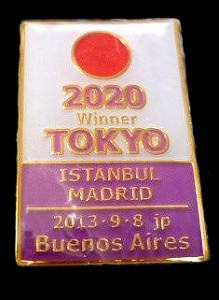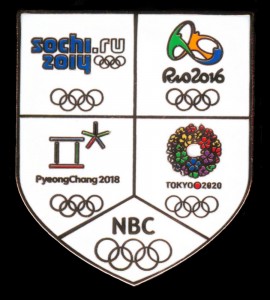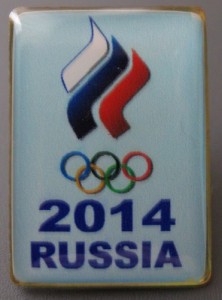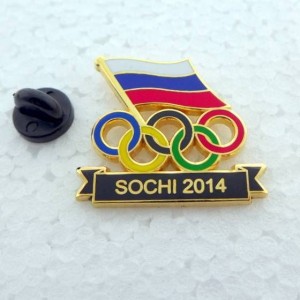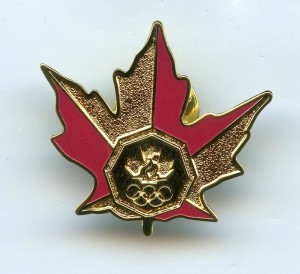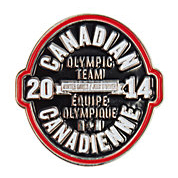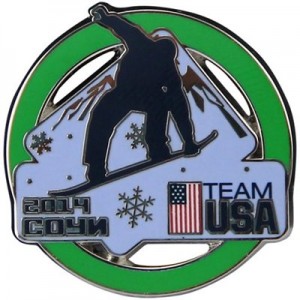Where is Abkhazia and what does it have to do with unauthorized NOC pins? Can you guess? First, beside being the answers to a National Geographic trivia question, the Republic of Abkhazia and the Republic of South Ossetia are disputed territories along the border between Georgia and Russia in the vicinity of Sochi, site of the 2014 Winter Olympics. I won’t go too deeply into the history, but both of these areas were semiautonomous regions within Georgia before and after the end of the Soviet Union. You may recall that Russia and Georgia fought a short, very one-sided war in 2008 when both republics broke away from Georgia and Russia prevented the Georgian military from reasserting control.
What, you might ask, does this have to do with unauthorized NOC pins? There are two parts to the answer. First, this week, the IOC reacted strongly to news that the Russian NOC had listed both territories in a database of countries eligible to take part in the Sochi Winter Olympics. Here is what they said:
“The IOC currently recognizes 204 National Olympic Committees,” an IOC official told Insidethegames.
“As stated in the Olympic Charter, ‘they have the exclusive authority for the representation of their respective countries at the Olympic Games and at the regional, continental or world multi-sports competitions patronized by the IOC’.
“To be eligible for participation in the Olympic Games a competitor must be entered by his NOC as recognized by the IOC.
“The IOC does recognize an NOC for Georgia (which has jurisdiction over the whole territory of Georgia) but does not recognize an NOC for Abkhazia or South Ossetia.”
The recognition of a new NOC requires, among other things, that it be recognized as a country by the international community. To date, these territories have been recognized by five countries: Russia, Nicaragua, Venezuela, Nauru and Tuvalu – a very interesting list, but only about 2.5% of the international community.
The second part of the answer is that “new” NOCs are a frequent target for producers of unauthorized NOC pins. Why? Because if you are a collector of NOC pins, wouldn’t you want the first pin produced by a new NOC? From the pin producer’s point-of-view, if there is no actual NOC, then there is no one except the IOC to hassle them about their pins. Here is an example from a few years ago:

Eritrea, in East Africa along the Red Sea, won independence from Ethiopia in 1993 after more than 30 years of struggle. The Eritrean NOC was founded in 1996 and was recognized by the IOC in 1999. Shortly after that, this pin started appearing. There was only one problem: there are only a handful of NOCs that have their national flag as the NOC logo, and Eritrea was not one of them. Flags are common vehicles for these bogus “first NOC” pins because their designs are widely distributed.
Another of these “new NOC” pins appeared in London:
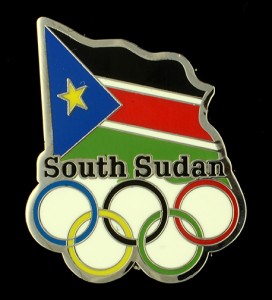
to take advantage of the fact that the IOC allowed marathon runner Guor Marial from the new country of South Sudan to take part in the Summer Olympics under the Olympic flag. There was just one small problem: as of the start of the London Olympic, there was no South Sudan NOC. This is why Guor marched into the Olympic Stadium under the Olympic Flag and not the flag of South Sudan. The story from people trading or selling this pin was that it was to publicize the new country and Guor’s attendance in London. That might even be true. However, as we have mentioned earlier, only the IOC and the NOCs are permitted to use the Olympic rings logo. That makes this pin illegal no matter who produced it.
So don’t be surprised if someone turns up selling or trading a new NOC pin from Abkhazia during the Sochi Winter Olympic Games. It will just be the latest in a long line of similar bogus pins.
Stay tuned until next time.
Steve
Stay tuned until next time.
Steve
